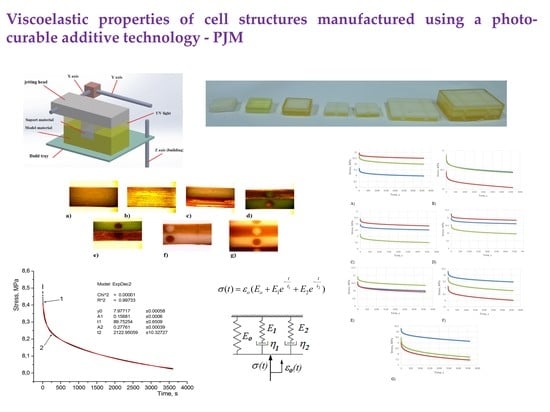Viscoelastic Properties of Cell Structures Manufactured Using a Photo-Curable Additive Technology—PJM
Abstract
:1. Introduction
2. Materials and Methods
2.1. Materials
2.2. PJM Technology
2.3. Specimen Preparation
- -
- Specimens A–E: base with 13 × 13 mm sides and a height of 6.3 mm.
- -
- Specimens F and G: base with 26 × 26 mm sides and a height of 6.3 mm and 12.6 mm, respectively.
2.4. Rheological Analysis
3. Results
Microstructure Views
4. Discussion
5. Conclusions
Author Contributions
Funding
Institutional Review Board Statement
Informed Consent Statement
Data Availability Statement
Conflicts of Interest
References
- Wójcik, A.; Niemczewska-Wójcik, M.; Sładek, J. Assessment of free-form surfaces’ reconstruction accuracy. Metrol. Meas. Syst. 2017, 303–312. [Google Scholar] [CrossRef]
- Dickins, A.; Widjanarko, T.; Sims-Waterhouse, D.; Thompson, A.; Lawes, S.; Senin, N.; Leach, R. Multi-view fringe projection system for surface topography measurement during metal powder bed fusion. J. Opt. Soc. Am. A 2020, 37, B93–B105. [Google Scholar] [CrossRef] [PubMed]
- Thompson, A.; Maskery, I.; Leach, R.K. X-ray computed tomography for additive manufacturing: A review. Meas. Sci. Technol. 2016, 27, 072001. [Google Scholar] [CrossRef]
- Kozior, T. The influence of selected selective laser sintering technology process parameters on stress relaxation, mass of models, and their surface texture quality. 3D Print. Addit. Manuf. 2020, 7, 126–138. [Google Scholar] [CrossRef]
- Bochnia, J.; Blasiak, S. Anisotrophy of Mechanical Properties of a Material Which is Shaped Incrementally Using Polyjet Technology. In Proceedings of the 22th International Conference of Engineering Mechanics, Svratka, Czech Republic, 9–12 May 2016. [Google Scholar]
- Kozior, T.; Bochnia, J.; Zmarzły, P.; Gogolewski, D.; Mathia, T.G. Waviness of freeform surface characterizations from austenitic stainless steel (316L) manufactured by 3D printing-selective laser melting (SLM) technology. Materials 2020, 13, 4372. [Google Scholar] [CrossRef]
- Kozior, T.; Kundera, C. Surface texture of models manufactured by FDM technology. AIP Conf. Proc. 2018, 2017, 020011. [Google Scholar]
- Kozior, T.; Bochnia, J. The influence of printing orientation on surface texture parameters in powder bed fusion technology with 316L steel. Micromachines 2020, 11, 639. [Google Scholar] [CrossRef]
- Hlinka, J.; Kraus, M.; Hajnys, J.; Pagac, M.; Petru, J.; Brytan, Z.; Tanski, T. Complex corrosion properties of aisi 316L steel prepared by 3D printing technology for possible implant applications. Materials 2020, 13, 1527. [Google Scholar] [CrossRef] [Green Version]
- Hanon, M.M.; Marczis, R.; Zsidai, L. Influence of the 3D printing process settings on tensile strength of PLA and HT-PLA. Period. Polytech. Mech. Eng. 2021, 65, 38–46. [Google Scholar] [CrossRef]
- Nowakowski, L.; Miko, E.; Skrzyniarz, M. Designation of the minimum thickness of machined layer for the milling process of Duralumin PA6. Proc. Eng. Mech. 2017, 2017, 722–725. [Google Scholar]
- Zmarzły, P.; Gogolewski, D.; Kozior, T. Design guidelines for plastic casting using 3D printing. J. Eng. Fiber. Fabr. 2020, 15. [Google Scholar] [CrossRef]
- Upadhyay, M.; Sivarupan, T.; Mansori, M.E. 3D printing for rapid sand casting—A review. J. Manuf. Process. 2017, 29, 211–220. [Google Scholar] [CrossRef] [Green Version]
- Budzik, G.; Przeszlowski, L.; Wieczorowski, M.; Rzucidlo, A.; Gapinski, B.; Krolczyk, G. Analysis of 3D printing parameters of gears for hybrid manufacturing. AIP Conf. Proc. 2018, 1960, 140005. [Google Scholar] [CrossRef]
- Tappa, K.; Jammalamadaka, U. Novel biomaterials used in medical 3D printing techniques. J. Funct. Biomater. 2018, 9, 17. [Google Scholar] [CrossRef] [Green Version]
- Chia, H.N.; Wu, B.M. Recent advances in 3D printing of biomaterials. J. Biol. Eng. 2015, 9, 1–14. [Google Scholar] [CrossRef] [Green Version]
- Bandyopadhyay, A.; Bose, S.; Das, S. 3D printing of biomaterials. MRS Bull. 2015, 40, 108–115. [Google Scholar] [CrossRef] [Green Version]
- Kozior, T.; Mamun, A.; Trabelsi, M.; Wortmann, M.; Lilia, S.; Ehrmann, A. Electrospinning on 3D printed polymers for mechanically stabilized filter composites. Polymers 2019, 11, 2034. [Google Scholar] [CrossRef] [Green Version]
- Bochnia, J.; Blasiak, M.; Kozior, T. Tensile strength analysis of thin-walled polymer glass fiber reinforced samples manufactured by 3d printing technology. Polymers 2020, 12, 2783. [Google Scholar] [CrossRef]
- Okolo, C.; Rafique, R.; Iqbal, S.S.; Saharudin, M.S.; Inam, F. Carbon nanotube reinforced high density polyethylene materials for offshore sheathing applications. Molecules 2020, 25, 2960. [Google Scholar] [CrossRef]
- Ehrmann, G.; Ehrmann, A. Investigation of the shape-memory properties of 3D printed pla structures with different infills. Polymers 2021, 13, 164. [Google Scholar] [CrossRef]
- Mick, S.; Lapeyre, M.; Rouanet, P.; Halgand, C.; Benois-Pineau, J.; Paclet, F.; Cattaert, D.; Oudeyer, P.Y.; Rugy, A.D. Reachy, a 3D-printed human-like robotic arm as a testbed for human-robot control strategies. Front. Neurorobot. 2019, 13, 1–12. [Google Scholar] [CrossRef] [Green Version]
- Jing, D.O.U.; Devine, D.M.; Lyons, J. 3D printed end of arm tooling (EOAT) for robotic automation. Robotics 2018, 7, 49. [Google Scholar] [CrossRef] [Green Version]
- Bodaghi, M.; Damanpack, A.R.; Liao, W.H. Self-expanding/shrinking structures by 4D printing. Smart Mater. Struct. 2016, 25, 105034. [Google Scholar] [CrossRef]
- Jones, A.; Straub, J. Concepts for 3D printing-based self-replicating robot command and coordination techniques. Machines 2017, 5, 12. [Google Scholar] [CrossRef] [Green Version]
- Won, J.; DeLaurentis, K.; Mavroidis, C. Rapid Prototyping of Robotic Systems. In Proceedings of the 2000 ICRA Millennium Conference, IEEE International Conference on Robotics and Automation, San Francisco, CA, USA, 24–28 April 2000; Volume 4, pp. 3077–3082. [Google Scholar]
- Kundera, C.; Martsynkowskyy, V.; Gudkov, S.; Kozior, T. Effect of rheological parameters of elastomeric ring materials on dynamic of face seals. Proc. Eng. 2017, 177, 307–313. [Google Scholar] [CrossRef]
- Kundera, C.; Kozior, T. Mechanical properties of models prepared by SLS technology. AIP Conf. Proc. 2018, 2017, 020012. [Google Scholar]
- Hajnyš, J.; Pagáč, M.; Zlámal, T.; Petrů, J.; Kousal, L. Stiffness of 316L stainless steel support structures proposed for the SLM process. MATEC Web Conf. 2018, 244, 01008. [Google Scholar] [CrossRef]
- Vesenjak, M.; Krstulović-Opara, L.; Ren, Z. Characterization of photopolymer cellular structure with silicone pore filler. Polym. Test. 2012, 31, 705–709. [Google Scholar] [CrossRef]
- Vesenjak, M.; Krstulović-Opara, L.; Ren, Z.; Domazet, Ž. Cell shape effect evaluation of polyamide cellular structures. Polym. Test. 2010, 29, 991–994. [Google Scholar] [CrossRef]
- Wyatt, H.; Alayyash, K.; Evans, S.L.; Mihai, L.A. Computer Modelling of Cellular Structures under Uniaxial Loading. In Proceedings of the 24th Conference of the UK Association for Computational Mechanics in Engineering, Cardiff, UK, 31 March–1 April 2016; pp. 1–4. [Google Scholar]
- Vesenjak, M.; Krstulović-Opara, L.; Ren, Z.; Öchsner, A.; Domazet, Ž. Experimental study of open-cell cellular structures with elastic filler material. Exp. Mech. 2009, 49, 501. [Google Scholar] [CrossRef]
- Novak, N.; Vesenjak, M.; Ren, Z. Auxetic cellular materials—A review. Stroj. Vestnik/J. Mech. Eng. 2016, 795, 139914. [Google Scholar] [CrossRef] [Green Version]
- Dziewit, P.; Platek, P.; Janiszewski, J.; Sarzynski, M.; Grazka, M.; Paszkowski, R. Mechanical Response of Additive Manufactured Regular Cellular Structures in Quasi-Static Loading Conditions—PART I Experimental Investigations. In Proceedings of the 7th International Conference on Mechanics and Materials in Design, Albufeira, Portugal, 11–15 June 2017. [Google Scholar]
- Yap, Y.L.; Yeong, W.Y. Shape recovery effect of 3D printed polymeric honeycomb. Virtual Phys. Prototyp. 2015, 10, 91–99. [Google Scholar] [CrossRef]
- Monkova, K.; Vasina, M.; Zaludek, M.; Monka, P.P.; Tkac, J. Mechanical vibration damping and compression properties of a lattice structure. Materials 2021, 14, 1502. [Google Scholar] [CrossRef] [PubMed]
- Kundera, C.; Bochnia, J. Investigating the stress relaxation of photopolymer O-ring seal models. Rapid Prototyp. J. 2014. [Google Scholar] [CrossRef]
- Kundera, C.; Kozior, T. Research of the elastic properties of bellows made in SLS technology. Proc. Adv. Mater. Res. 2014, 874, 77–81. [Google Scholar] [CrossRef]
- Kozior, T. Rheological properties of polyamide pa 2200 in sls technology. Teh. Vjesn. 2020, 27, 1092–1100. [Google Scholar] [CrossRef]
- Bochnia, J. Evaluation of relaxation properties of digital materials obtained by means of PolyJet Matrix technology. Bull. Pol. Acad. Sci. Tech. Sci. 2018, 66, 891–897. [Google Scholar] [CrossRef]
- Kundera, C.; Kozior, T. Evaluation of the rheological properties of photopolymers used in Polymer Jetting technology. MATEC Web Conf. 2019, 254, 07001. [Google Scholar] [CrossRef]
- Kozior, T.; Kundera, C. Rheological properties of cellular structures manufactured by additive PJM technology. Teh. Vjesn. Gaz. 2021, 28, 1092–1100. [Google Scholar]
- Gibson, L.J.; Ashby, M.F. Cellular Solids: Structure and Properties, 2nd ed.; Cambridge University Press: Cambridge, UK, 1997. [Google Scholar]
- Bochnia, J.; Blasiak, S. Fractional relaxation model of materials obtained with selective laser sintering technology. Rapid Prototyp. J. 2019, 25, 76–86. [Google Scholar] [CrossRef]
- Brinson, H.F.; Brinson, L.C. Polymer Engineering Science and Viscoelasticity; Springer Nature: Basingstoke, UK, 2015. [Google Scholar]
- Bochnia, J.; Kozior, T. Methods of Prototyping Process Using Modern Additive Technologies. In Solid State Phenomena; Trans Tech Publications Ltd.: Bach, Switzerland, 2015. [Google Scholar]
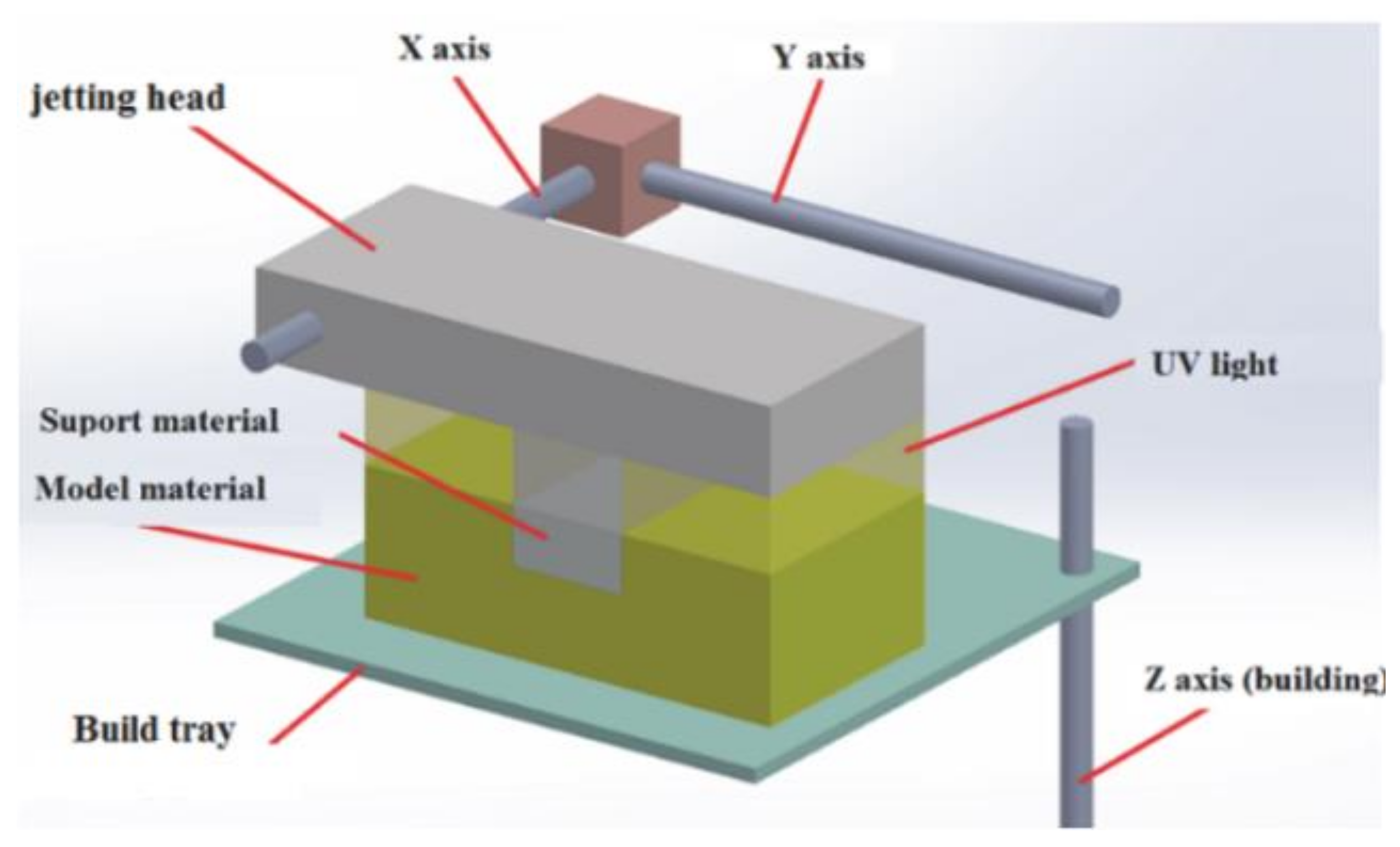
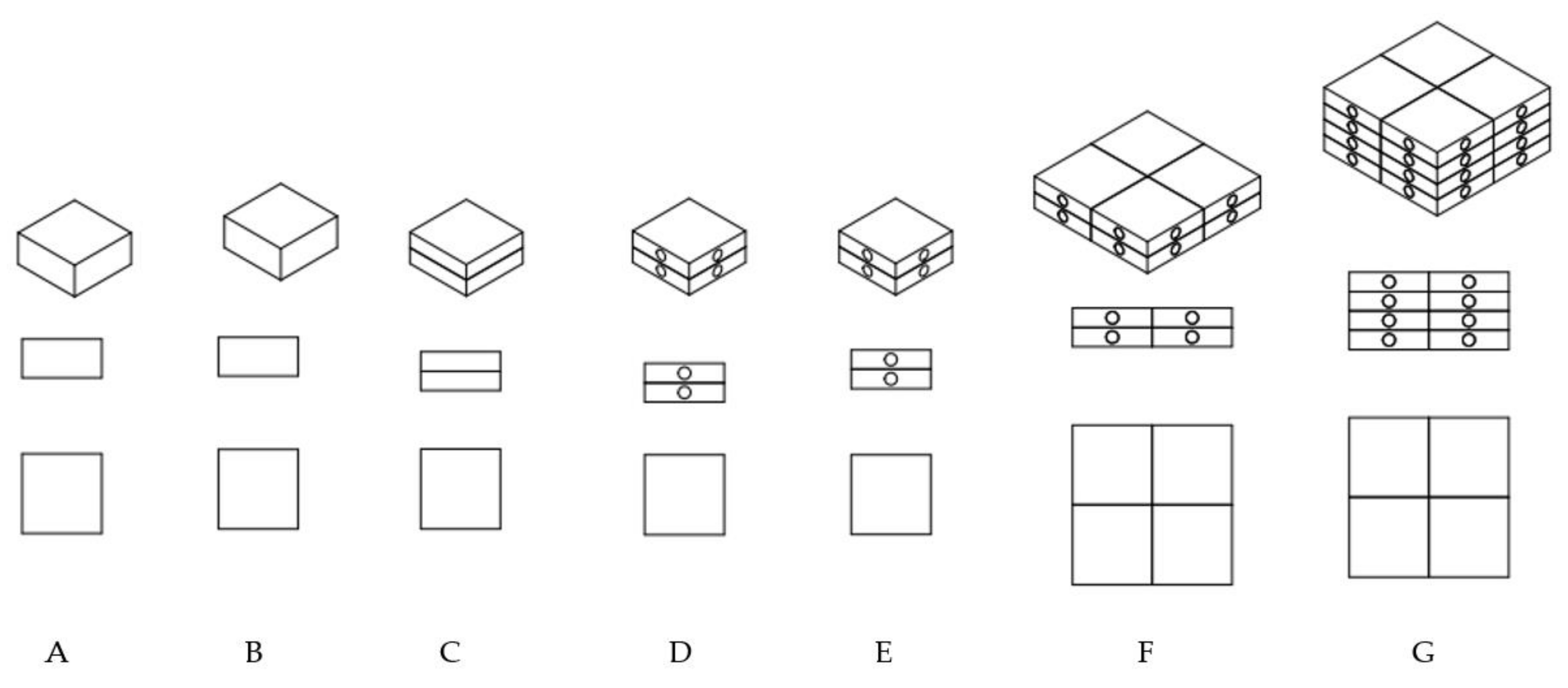

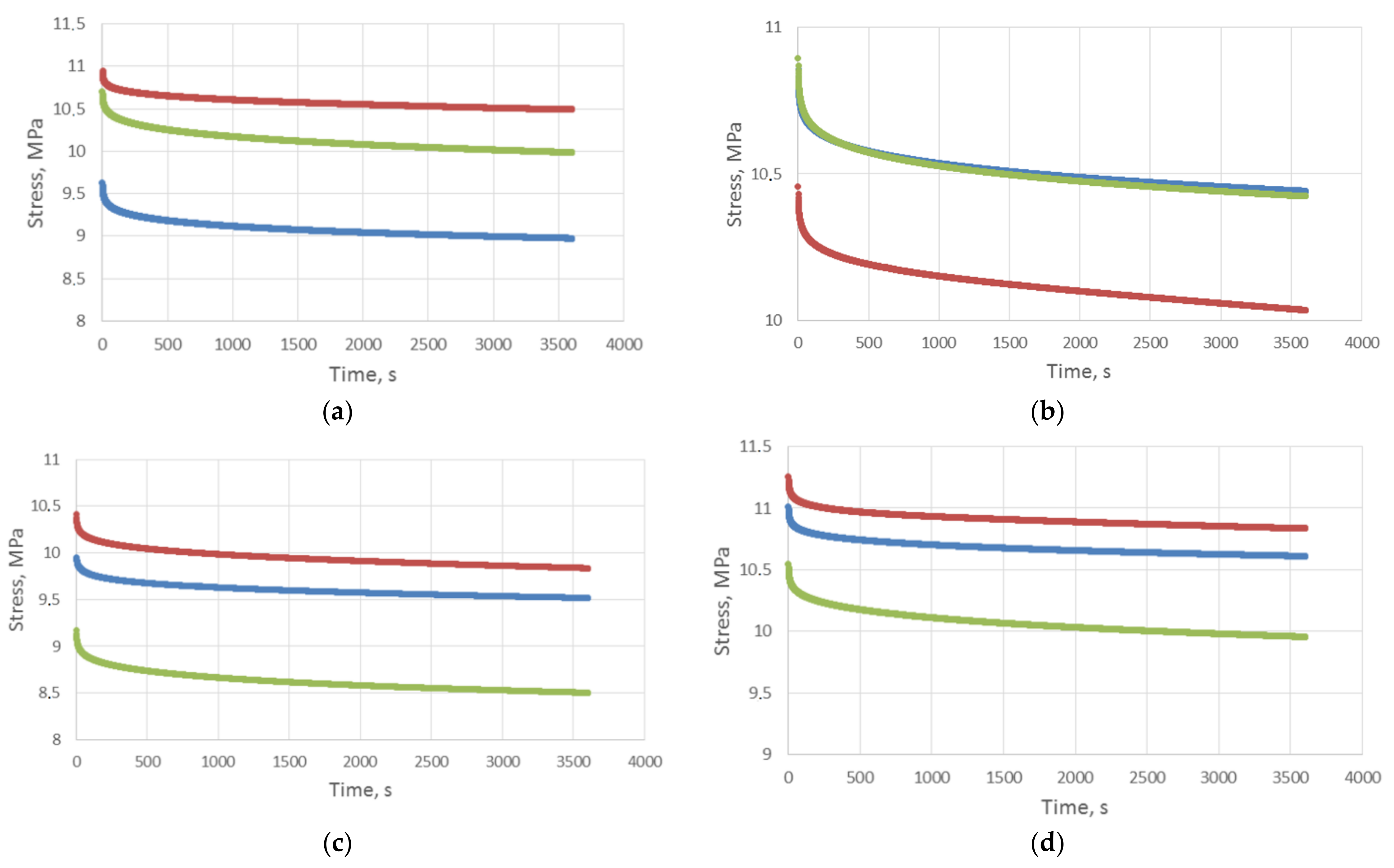

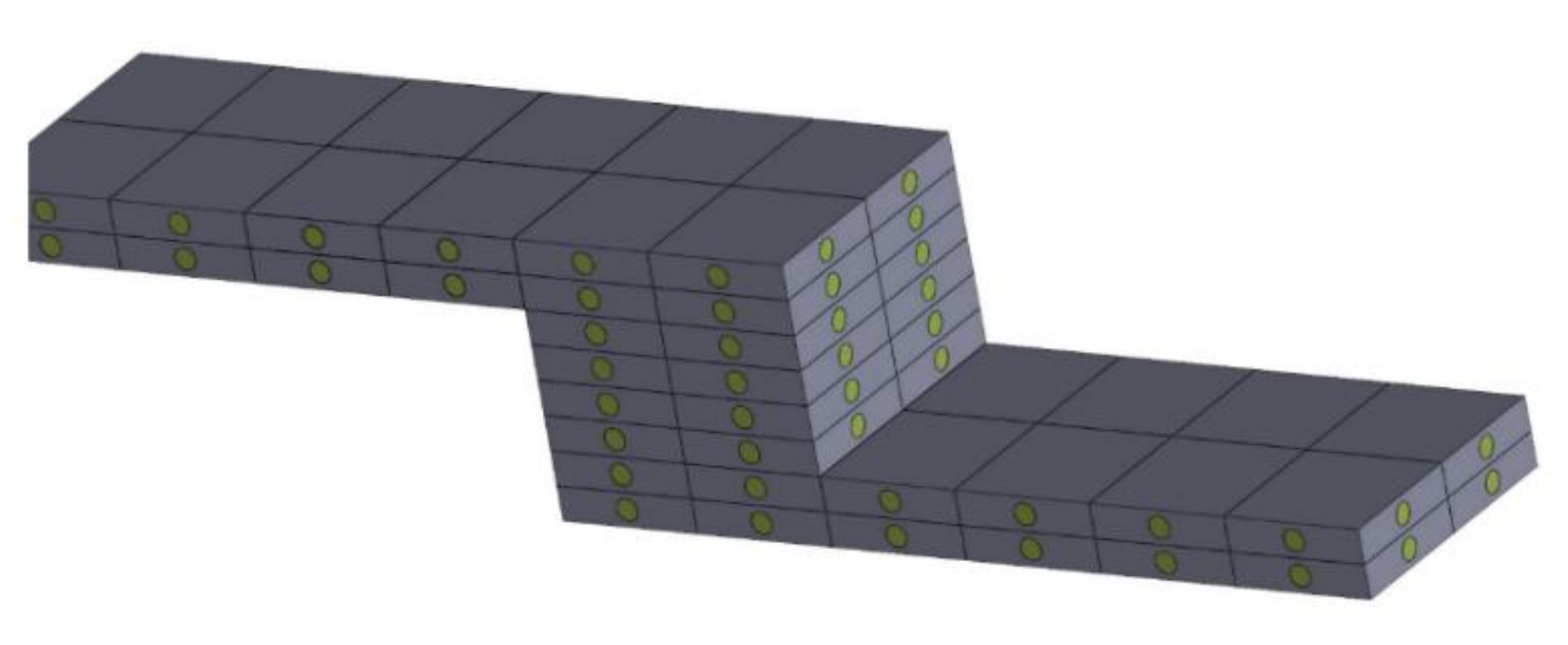



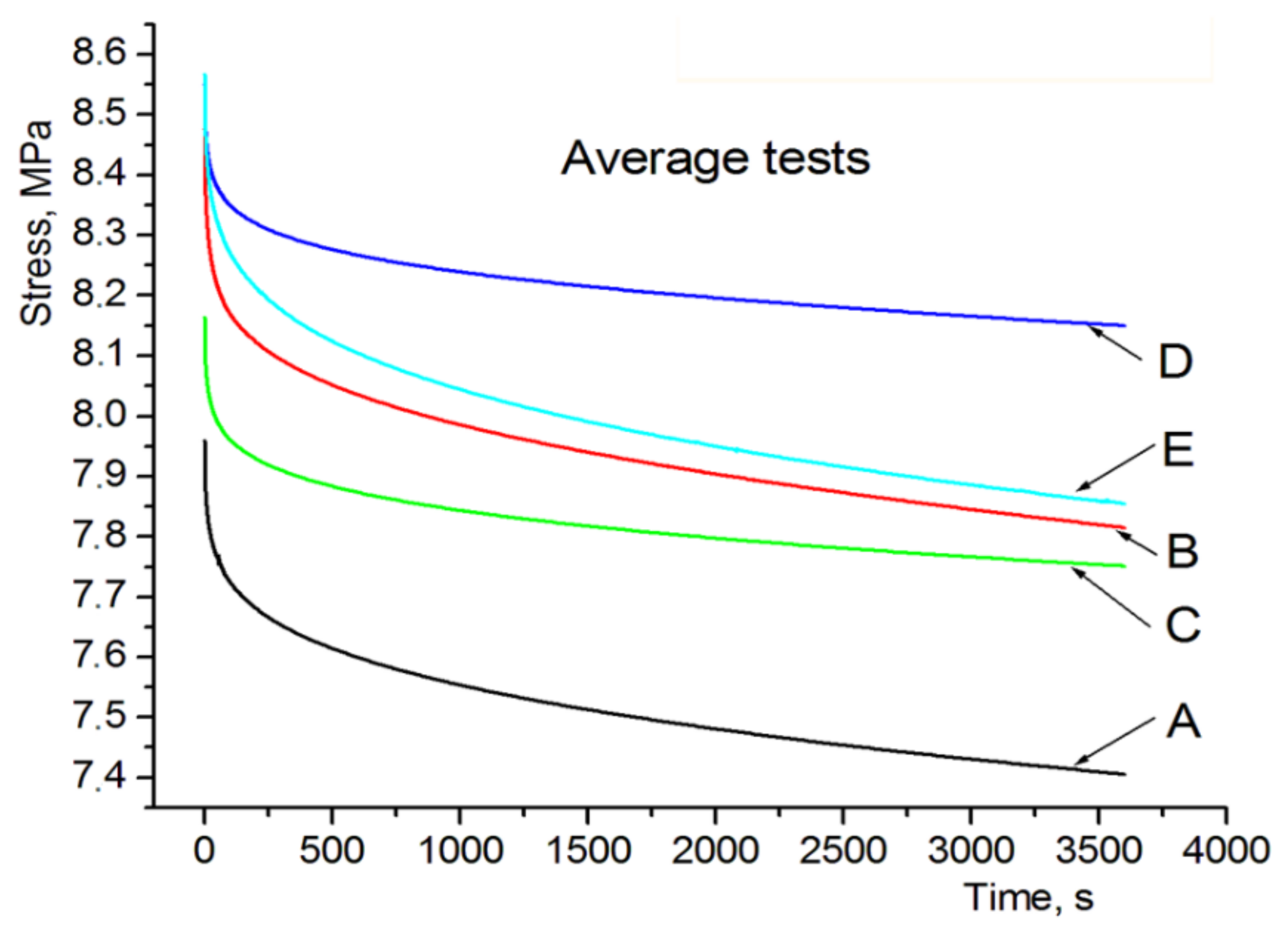
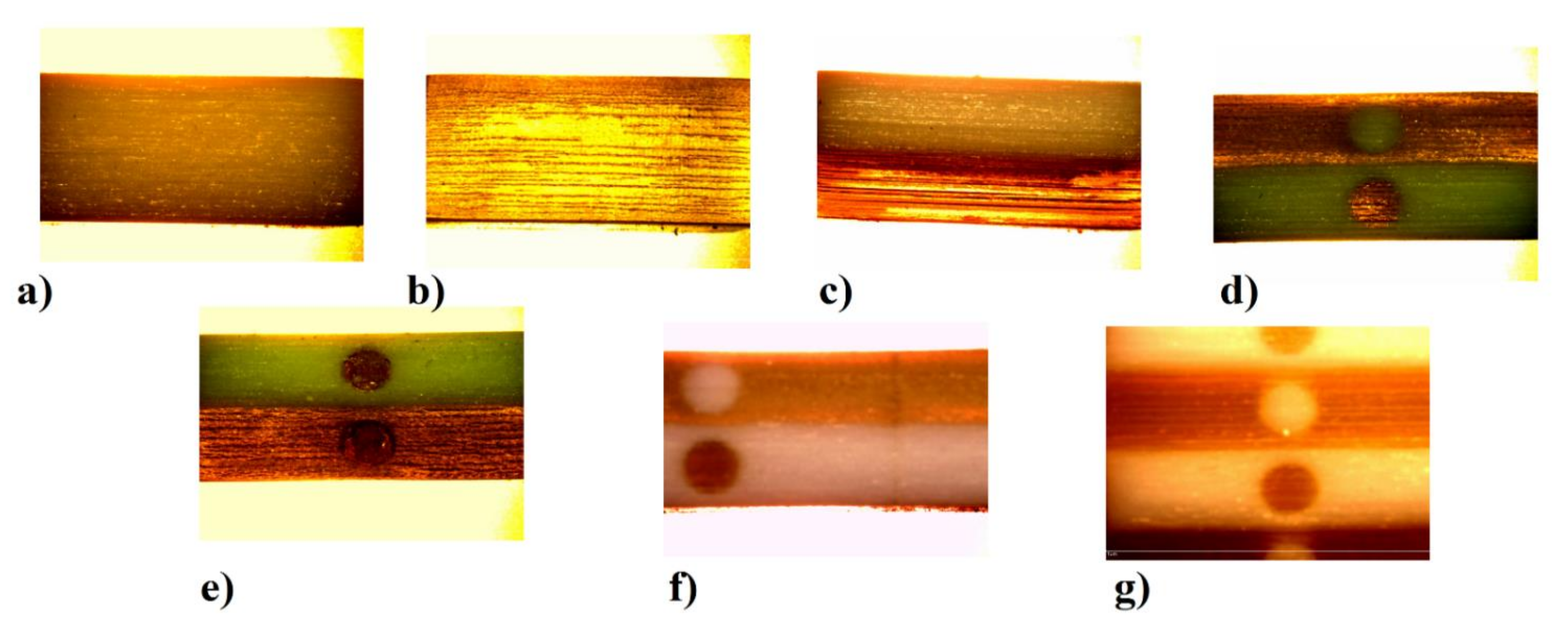
| CAS | Components | Percentage |
|---|---|---|
| VeroWhite | ||
| Unavailable | Acrylicoligomers | 30–50 |
| Proprietary | Monomer | 10–30 |
| 5888-33-5 | 2-propenoic acid, 1,7,7-trimethylbicyclo[2.2.1]hept-2-yl ester | 10–30 |
| 87320-05-6 | [2-[1,1-dimethyl-2[(1-oxoallyl)oxy]-5-ethyl-1,3-dioxan-5yl]methyl acrylate | 0–10 |
| 154508-99-8 | Epoxy acrylic oligomer | 1–10 |
| Proprietary | Photoinitiator | 1–5 |
| CAS | Components | Percentage |
|---|---|---|
| FullCure 720 | ||
| - | Acrylic monomer | <30 |
| 588-33-5 | Isobornyl acrylate | <25 |
| - | Phenol, 4,4’-(1-methylethylidene)bis-, polymer with (chloromethyl)oxirane, 2-propenoate | <15 |
| - | Phosphine oxide, phenylbis(2,4,6-trimethylbenzoyl)- | <2 |
| 52408-84-1 | Acrylic acid ester | <0.3 |
| CAS | Components | Percentage |
|---|---|---|
| FullCure 705 | ||
| - | Poly(oxy-1,2-ethanediyl), α-(1-oxo-2-propenyl)-ω-hydroxy- | <50 |
| 57-55-6 | 1,2-Propylene glycol | <35 |
| 25322-68-3 | Polyethylene glycerol | <30 |
| 56-81-5 | Glycerin | <25 |
| - | Phosphine oxide, phenylbis(2,4,6-trimethylbenzoyl)- | <0.5 |
| 52408-84-1 | Acrylic acid ester | <0.3 |
| Stresses Relaxation Indicators—Mean Value | Specimen Type | ||||||
|---|---|---|---|---|---|---|---|
| A | B | C | D | E | F | G | |
| Δσ | 0.095 | 0.074 | 0.073 | 0.055 | 0.085 | 0.033 | 0.039 |
| SD | 0.049 | 0.005 | 0.016 | 0.009 | 0.025 | 0.005 | 0.013 |
| Specimen | Eo, MPa | E1, MPa | E2, MPa | η1, MPa⋅s | η2, MPa⋅s | ES, MPa |
|---|---|---|---|---|---|---|
| A | 72.945 | 2.592 | 4.384 | 253.199 | 8449.591 | 79.921 |
| B | 77.399 | 1.923 | 3.527 | 179.174 | 30942.076 | 82.849 |
| C | 76.067 | 2.019 | 3.412 | 134.879 | 6878.735 | 81.498 |
| D | 80.614 | 1.493 | 2.829 | 134.421 | 5850.091 | 84.936 |
| E | 76.251 | 2.221 | 4.446 | 224.879 | 9246.132 | 82.918 |
| F | 21.564 | 0.264 | 0.381 | 22.573 | 779.498 | 22.209 |
| G | 20.497 | 0.280 | 0.442 | 24.716 | 886.282 | 21.219 |
Publisher’s Note: MDPI stays neutral with regard to jurisdictional claims in published maps and institutional affiliations. |
© 2021 by the authors. Licensee MDPI, Basel, Switzerland. This article is an open access article distributed under the terms and conditions of the Creative Commons Attribution (CC BY) license (https://creativecommons.org/licenses/by/4.0/).
Share and Cite
Kozior, T.; Kundera, C. Viscoelastic Properties of Cell Structures Manufactured Using a Photo-Curable Additive Technology—PJM. Polymers 2021, 13, 1895. https://doi.org/10.3390/polym13111895
Kozior T, Kundera C. Viscoelastic Properties of Cell Structures Manufactured Using a Photo-Curable Additive Technology—PJM. Polymers. 2021; 13(11):1895. https://doi.org/10.3390/polym13111895
Chicago/Turabian StyleKozior, Tomasz, and Czesław Kundera. 2021. "Viscoelastic Properties of Cell Structures Manufactured Using a Photo-Curable Additive Technology—PJM" Polymers 13, no. 11: 1895. https://doi.org/10.3390/polym13111895
APA StyleKozior, T., & Kundera, C. (2021). Viscoelastic Properties of Cell Structures Manufactured Using a Photo-Curable Additive Technology—PJM. Polymers, 13(11), 1895. https://doi.org/10.3390/polym13111895






